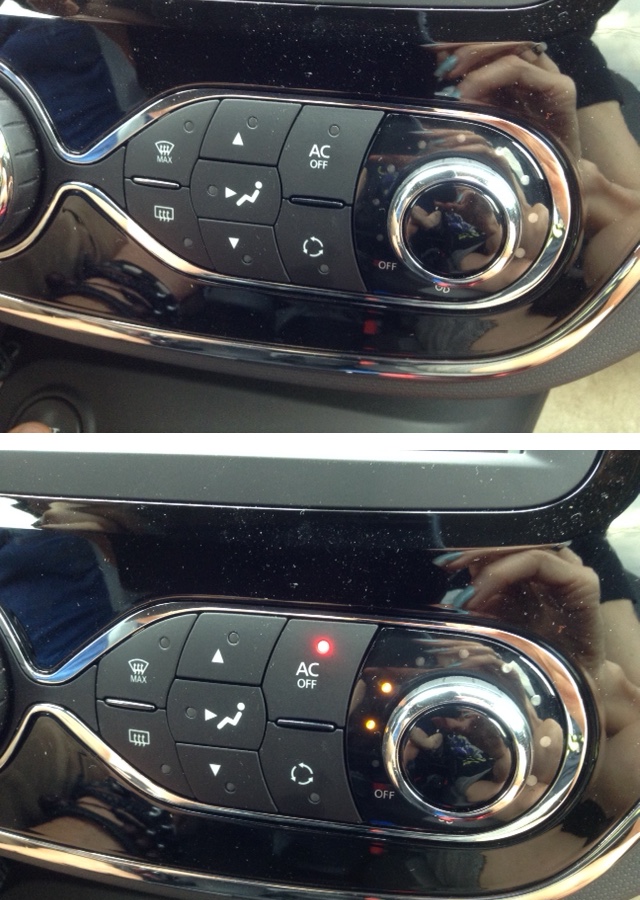Automotive UX does not have the best reputation. Sure, there have been some wins, and carmakers like Tesla have put interface design front-and-center, but curious problems persist. We’ve got another bout of quizzical automotive interfacing for you courtesy of Deborah Sommers.
“After giving up being a car owner for the convenience of rentals and city cars, one of the challenges has been finding the buttons for all the little things like tuner, volume, and—in particular—air conditioning,” Sommers says. “However, this most recent rental topped them all for poor design. We easily found the AC button on this Renault Captur, but had trouble understanding how to turn it on and off.”
“The console features a tiny red light to indicate OFF and no light to indicate on!” she says. “It took a while for this to sink in and I found the need to keep testing to be sure this was actually true. For me it was a real WTF design moment.”
Keep these coming. Send them to us via Twitter or Facebook using the hastag #wtfUX or email them to: [email protected] with “#wtfUX” in the subject line. Include as much context as you can, so we get a full understanding of what the f%*k went wrong.








